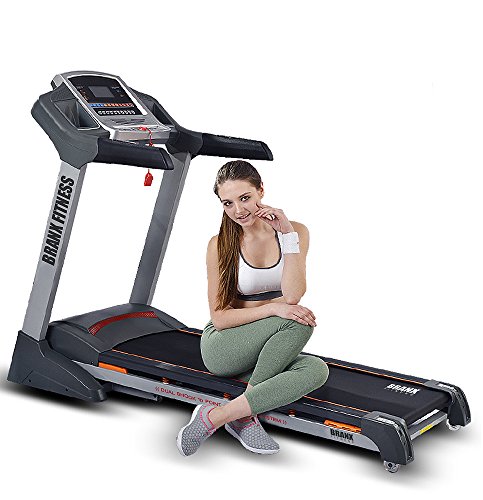Exploring the Benefits of Walking Pads: The Non-Electric Choice
In the age of contemporary fitness solutions, where innovation rules supreme and elegance is often associated with electrical machines, a new trend is emerging in useful exercise: the non-electric walking pad. These easy yet effective tools are recording the interest of physical fitness lovers and casual walkers alike.
In this extensive guide, we will explore what walking pads are, their advantages, comparisons with traditional treadmills, and provide responses to frequently asked concerns.
What is a Walking Pad?
A walking pad is a compact workout platform created mainly for walking, jogging, or light running. Unlike standard treadmills which rely on electrical power, non-electric walking pads run on a manual system. Users move themselves forward by walking or running, utilizing their own body weight.
Key Features of Non-Electric Walking Pads:
- Compact Design: Most walking pads are lightweight and foldable, making them easy to shop and transportation.
- User Controlled: The speed and intensity of the workout depend upon the user's own effort.
- No Plug Required: Perfect for energy-conscious people, these pads need no power usage.
- Silent Operation: A quieter alternative to electric treadmills, making them ideal for houses or shared areas.
Advantages of Using Non-Electric Walking Pads
Utilizing a non-electric walking pad presents a variety of advantages. Below are a few of the popular benefits:
| Benefit | Description |
|---|---|
| Cost-efficient | Non-electric models are generally more budget friendly than their electric counterparts, making them accessible to a wider audience. |
| Boosted Flexibility | Users can walk or jog at their own speed, which is specifically advantageous for novices or those recuperating from injuries. |
| Space-Saving Design | Due to their compact size, walking pads fit conveniently in smaller areas, making them ideal for home or office use. |
| Low Maintenance | With no electrical elements, these pads need minimal upkeep and are less most likely to break down. |
| Environmentally Friendly | No electricity suggests no ecological effect from energy usage, making them a terrific option for eco-conscious customers. |
Comparing Non-Electric Walking Pads to Traditional Treadmills
| Function | Non-Electric Walking Pad | Conventional Treadmill |
|---|---|---|
| Source of power | Manual (user-powered) | Electric (plugged in) |
| Cost | Lower upfront cost | Greater preliminary financial investment |
| Size | Compact and portable | Larger, frequently stationary |
| Sound Level | Very peaceful | Can be loud, depending upon motor and use |
| Modification | Restricted user settings | Substantial settings (speed, incline, programs) |
| Physical Engagement | Greater strength and effort needed | Easier to use however might motivate less engagement |
How to Use a Non-Electric Walking Pad
Utilizing a non-electric walking pad is simple. Here's a simple detailed guide:
- Set Up: Place the walking pad on a flat, stable surface.
- Adjust the Pad: Ensure that it is at a comfortable position for use-- most pads have adjustable angles to customize the walking experience.
- Warm-Up: Before using the pad, perform a short warm-up routine, which can consist of gentle extending.
- Start Walking: Step onto the pad and begin walking at a moderate speed. As your speed increases, you will observe the pad moving.
- Screen Your Intensity: Pay attention to your heart rate and how you feel. Change your speed according to your fitness level.
- Cool Down: Gradually decrease your speed before stepping off the pad, followed by cooldown stretches.
Best Practices for Using Walking Pads
To make the most of the advantages of non-electric walking pads, think about the following tips:
- Incorporate Variety: Alternate in between walking and running for a full-body workout.
- Engage Your Core: Maintain good posture by keeping your core engaged while utilizing the pad.
- Hydration: Remember to hydrate before and after your workout.
- Consistency: Aim to use the walking pad regularly. Start with 15-20 minutes and gradually increase the period.
Regularly Asked Questions
1. How reliable are non-electric walking pads for weight loss?
Non-electric walking pads can be efficient for weight-loss when utilized regularly in conjunction with a healthy diet. Considering that they require more effort, they can make it possible for greater caloric expenditure during exercises.
2. What is the weight capability of many walking pads?
A lot of non-electric walking pads can support people approximately 250-300 pounds, depending on the design. Always inspect the maker's requirements for accurate information.
3. Are there any recommended brands for walking pads?
Some popular brand names consist of InMovement, ProForm (manual models), and ECHANFIT, each providing a range of functions customized to diverse user choices.
4. hometreadmills.uk -electric walking pads be used outdoors?
These walking pads are usually developed for indoor use. Utilizing them outdoors might expose them to climate condition that might impact their sturdiness.
5. How do I store a walking pad?
Many non-electric walking pads are foldable. Merely fold them up and keep them in a closet, under a bed, or any convenient area.
Non-electric walking pads offer a distinct and reliable aerobic workout choice that highlights simplicity and accessibility. By permitting users to create their physical fitness routine without the restrictions of power cables and complicated user interfaces, these pads empower people throughout various fitness levels.
For anybody looking for a budget friendly, space-saving, and effective option to conventional exercise equipment, exploring the world of non-electric walking pads may be the perfect next step in their fitness journey. By picking to buy among these flexible tools, individuals can foster healthier routines while enjoying the empowering experience of movement by themselves terms.

